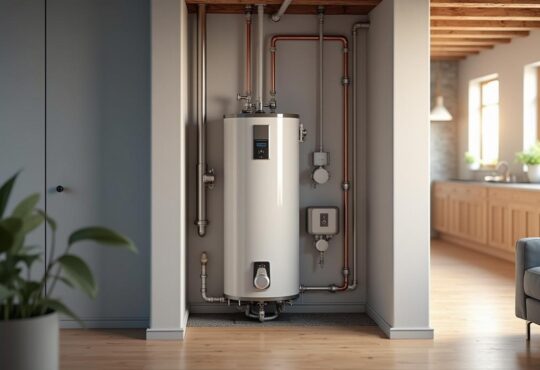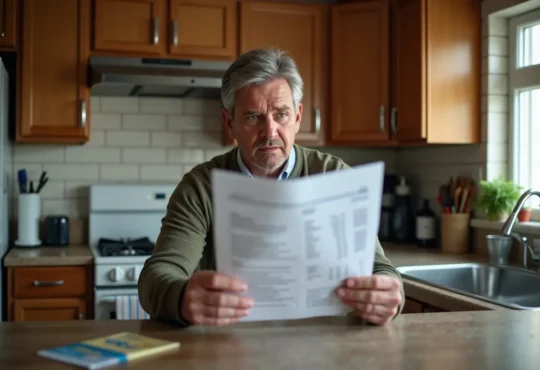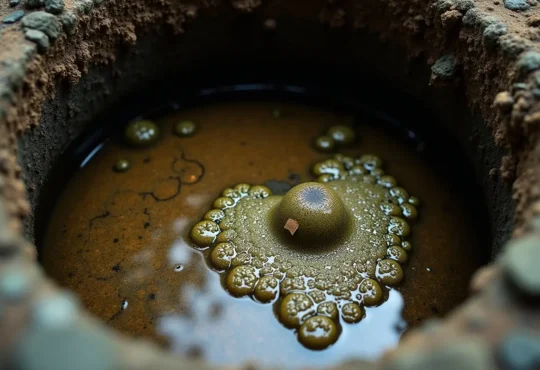
How Does a Composting Toilet Work?
In an era where environmental consciousness is paramount, composting toilets have emerged as a game-changer in sustainable waste management. How exactly does a composting toilet work? Let’s learn more about these innovative systems that not only conserve precious water resources but also transform human waste into a valuable resource: nutrient-rich compost.
Contents
- 1 Demystifying the Composting Process
- 2 Art of Separating Liquids and Solids
- 3 Ventilation: The Secret to Odor Control
- 4 Water Conservation: A Sustainable Advantage
- 5 Versatility in Application: From Off-Grid Living to Urban Dwellings
- 6 Embracing a Circular Economy: Transforming Waste into Valuable Resources
- 7 Installation and Maintenance: Simplicity at Its Core
- 8 Exploring the Diverse Range of Composting Toilet Options
- 9 Regulatory Considerations and Best Practices
- 10 Embracing a Sustainable Future: The Rise of Composting Toilets
- 11 FAQ
- 11.1 How do you empty a composting toilet?
- 11.2 What are the drawbacks of a composting toilet?
- 11.3 Where does the toilet paper go in a composting toilet?
- 11.4 What do you do with the waste from a composting toilet?
- 11.5 What if you have diarrhea in a composting toilet?
- 11.6 How long does it take poop to decompose in a composting toilet?
Demystifying the Composting Process
At the heart of a composting toilet lies a remarkable biological process that harnesses the power of nature to break down organic matter. Unlike conventional toilets, composting toilets use a dry system to separate solid and liquid waste, preventing odors and aiding decomposition.
The solid waste, often referred to as “solids,” is collected in a designated container or chamber within the toilet system. To kickstart the composting process, add a bulking agent, such as sawdust, coconut coir, or peat moss to the solids. These carbon-rich materials help absorb moisture, promote aeration, and provide the ideal environment for aerobic bacteria to thrive.
Bacteria consume organic matter, breaking it down through chemical reactions and generating heat, speeding up decomposition. The bulking agent maintains optimal moisture and oxygen, ensuring a thriving ecosystem for composting microorganisms.
Art of Separating Liquids and Solids
One of the key features that sets composting toilets apart is their ability to separate liquids (urine) from solids (feces). This separation takes place thanks to a cleverly designed urine diverter, which channels the liquid waste into a separate container or drainage system.
By keeping liquids and solids separate, composting toilets effectively eliminate the primary source of foul odors associated with traditional toilets. Urine, when isolated, is relatively odorless and can be easily disposed of or even utilized as a nutrient-rich fertilizer for plants.
Moreover, the separation process ensures that the solid waste remains dry, which is essential for efficient composting. Moisture levels are carefully managed through the addition of bulking agents, allowing the aerobic bacteria to thrive and accelerate the decomposition process.
Ventilation: The Secret to Odor Control
While the separation of liquids and solids plays a crucial role in odor management, composting toilets also employ advanced ventilation systems to ensure a truly odorless experience. These systems typically feature a built-in fan that continuously circulates air through the composting chamber, expelling any residual odors outside the toilet area.
The ventilation process not only removes odors but also aids in the drying of the solid waste, further enhancing the composting efficiency. Consistent airflow in composting toilets creates an optimal environment for aerobic bacteria to break down organic matter into compost.
Water Conservation: A Sustainable Advantage
One of the most compelling benefits of composting toilets is their ability to conserve water significantly. Unlike conventional flush toilets, which can consume gallons of water with every flush, composting toilets operate without the need for water or chemical additives.
Composting toilets reduce the strain on freshwater resources and eliminate the production of blackwater (water mixed with human waste). This waste stream poses significant environmental challenges, as it requires extensive treatment and processing before it can be safely released back into the environment.
In a world where water scarcity is an ever-growing concern, composting toilets offer a sustainable solution that aligns with the principles of water conservation and environmental stewardship.
Versatility in Application: From Off-Grid Living to Urban Dwellings
Composting toilets are not limited to a specific living environment or setting. Their versatility makes them suitable for a wide range of applications, from off-grid cabins and tiny homes to urban dwellings and even recreational vehicles (RVs).
In remote or off-grid locations where traditional plumbing and sewage systems are unavailable or impractical, composting toilets provide a self-contained and environmentally friendly solution for waste management. They eliminate the need for complex infrastructure, making them an ideal choice for those embracing a self-sufficient lifestyle.
Furthermore, composting toilets have gained popularity in urban settings as well, particularly among eco-conscious homeowners and builders seeking sustainable alternatives to conventional waste management systems. These toilets can be seamlessly integrated into modern homes, offering a unique blend of convenience and environmental responsibility.
Embracing a Circular Economy: Transforming Waste into Valuable Resources
One of the most remarkable aspects of composting toilets is their ability to transform human waste into a valuable resource: nutrient-rich compost. This compost can be safely used as a soil amendment, providing essential nutrients to plants and promoting healthy plant growth.
By closing the loop and returning organic matter to the soil, composting toilets contribute to a circular economy, where waste is viewed not as a burden but as a valuable resource. This approach aligns with the principles of sustainability, reducing the need for synthetic fertilizers and promoting a more eco-friendly approach to gardening and agriculture.
Furthermore, some advanced composting toilet systems even produce biogas, a renewable energy source useful for cooking or heating purposes. This added benefit further enhances the environmental credentials of these innovative systems, positioning them as true champions of sustainable living.
Installation and Maintenance: Simplicity at Its Core
Despite their advanced functionality, designers have created composting toilets with simplicity in mind, making installation and maintenance relatively straightforward processes. Many models require minimal plumbing or electrical connections, suiting both off-grid and on-grid applications.
Regular maintenance typically involves adding a bulking agent after each use and periodically emptying the solid waste container. Some models even feature automated systems that simplify the maintenance process, ensuring a hassle-free experience for users.
With proper care and maintenance, composting toilets can provide years of reliable service, offering a sustainable and eco-friendly solution for waste management while reducing the overall environmental impact of human habitation.
Exploring the Diverse Range of Composting Toilet Options
As the demand for sustainable living solutions continues to grow, the market for composting toilets has expanded to offer a diverse range of options to suit various needs and preferences. From compact, portable models for camping and RVs to larger, sophisticated systems for residential and commercial use, composting toilets suit every need.
Some popular options include:
- Portable Composting Toilets: Ideal for camping, RVs, and mobile living situations, these compact units are designed for easy transportation and setup. They typically feature a self-contained composting chamber and a removable waste container for convenient emptying.
- Residential Composting Toilets: Designed for permanent installation in homes, cabins, or tiny houses, these systems offer a more robust and aesthetically pleasing solution. They often incorporate advanced features such as automated ventilation systems, larger composting chambers, and user-friendly interfaces.
- Commercial Composting Toilets: For larger-scale applications, such as public restrooms, campgrounds, or eco-lodges, commercial composting toilets provide a high-capacity solution. These systems can handle higher usage volumes while maintaining efficient composting and odor control.
- Urine-Diverting Composting Toilets: Some composting toilets feature a specialized urine diversion system, which separates liquid and solid waste at the source. This separation can further enhance the composting process and simplify maintenance.
Regardless of the specific model or application, composting toilets offer a sustainable and eco-friendly alternative to traditional waste management systems, empowering individuals and communities to take an active role in reducing their environmental footprint.
Regulatory Considerations and Best Practices
Composting toilets offer many benefits, but ensure you comply with local regulations and best practices for installation and use. Some areas may have specific guidelines or requirements for the installation and operation of composting toilets, particularly in residential or commercial settings.
Additionally, it’s essential to follow the manufacturer’s instructions carefully to ensure proper installation, maintenance, and safe handling of the composted waste. Ensure proper ventilation and use of appropriate bulking agents for efficient composting toilet operation. Regular maintenance minimizes health and environmental risks.
Embracing a Sustainable Future: The Rise of Composting Toilets
As the world becomes increasingly conscious of the need for sustainable living practices, composting toilets will play a pivotal role in shaping a more eco-friendly future. These innovative systems address water conservation and provide a holistic solution for waste management, resource recovery, and environmental stewardship.
By embracing composting toilets, individuals, communities, and organizations can take a proactive step towards reducing their environmental impact, promoting a circular economy, and fostering a more sustainable relationship with the natural world.
As technology continues to advance and awareness grows, we can expect to see composting toilets becoming more mainstream, integrated into urban planning, and adopted by forward-thinking communities committed to creating a greener, more sustainable future for generations to come.
FAQ
How do you empty a composting toilet?
Emptying a composting toilet is simple. Remove and dispose of the solid waste container per local regulations. Add composted material to a dedicated compost pile or dispose of it through household waste channels. Safely pour liquid waste down a toilet, drain, or use it as fertilizer.
What are the drawbacks of a composting toilet?
Composting toilets offer many benefits but have potential drawbacks. They may cost more upfront, require regular maintenance, and have a learning curve. Additionally, some may see them as less convenient or hygienic, though proper usage and maintenance often address these concerns.
Where does the toilet paper go in a composting toilet?
In a composting toilet, deposit toilet paper with the solid waste. It decomposes during composting. Use toilet paper designed for composting toilets to ensure proper breakdown and avoid chemicals that may hinder the process.
What do you do with the waste from a composting toilet?
Handle composting toilet waste according to local regulations and preferences. Composted solid waste can go into a compost pile or be used as a soil amendment. Safely pour liquid waste down a toilet or drain, or dilute and use as fertilizer for plants.
What if you have diarrhea in a composting toilet?
If diarrhea or other liquid waste occurs in a composting toilet, add extra bulking agent like sawdust or coconut coir. This absorbs moisture and maintains optimal levels for composting. Additionally, increasing ventilation or adding a desiccant may help dry solid waste faster. If the problem persists, consult the manufacturer’s instructions or seek professional advice.
How long does it take poop to decompose in a composting toilet?
The decomposition time in a composting toilet can vary depending on several factors, such as the type of composting toilet, the moisture levels, the temperature, and the amount of bulking agent used. On average, it takes several weeks to months. Regular maintenance, proper ventilation, and bulking agents speed up the process.





 Hi I'm Joe.
Hi I'm Joe. 